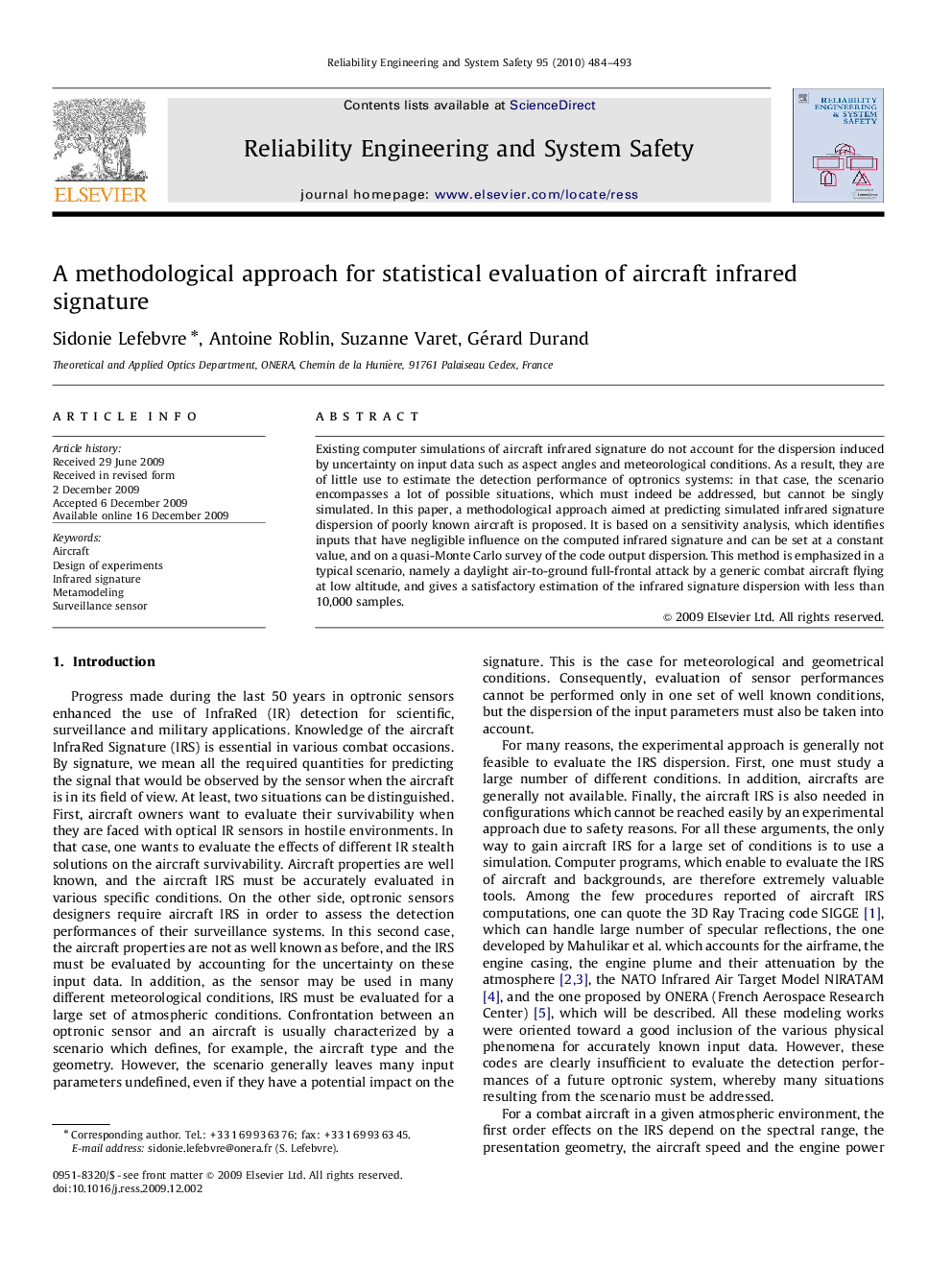| Article ID | Journal | Published Year | Pages | File Type |
|---|---|---|---|---|
| 808028 | Reliability Engineering & System Safety | 2010 | 10 Pages |
Existing computer simulations of aircraft infrared signature do not account for the dispersion induced by uncertainty on input data such as aspect angles and meteorological conditions. As a result, they are of little use to estimate the detection performance of optronics systems: in that case, the scenario encompasses a lot of possible situations, which must indeed be addressed, but cannot be singly simulated. In this paper, a methodological approach aimed at predicting simulated infrared signature dispersion of poorly known aircraft is proposed. It is based on a sensitivity analysis, which identifies inputs that have negligible influence on the computed infrared signature and can be set at a constant value, and on a quasi-Monte Carlo survey of the code output dispersion. This method is emphasized in a typical scenario, namely a daylight air-to-ground full-frontal attack by a generic combat aircraft flying at low altitude, and gives a satisfactory estimation of the infrared signature dispersion with less than 10,000 samples.
